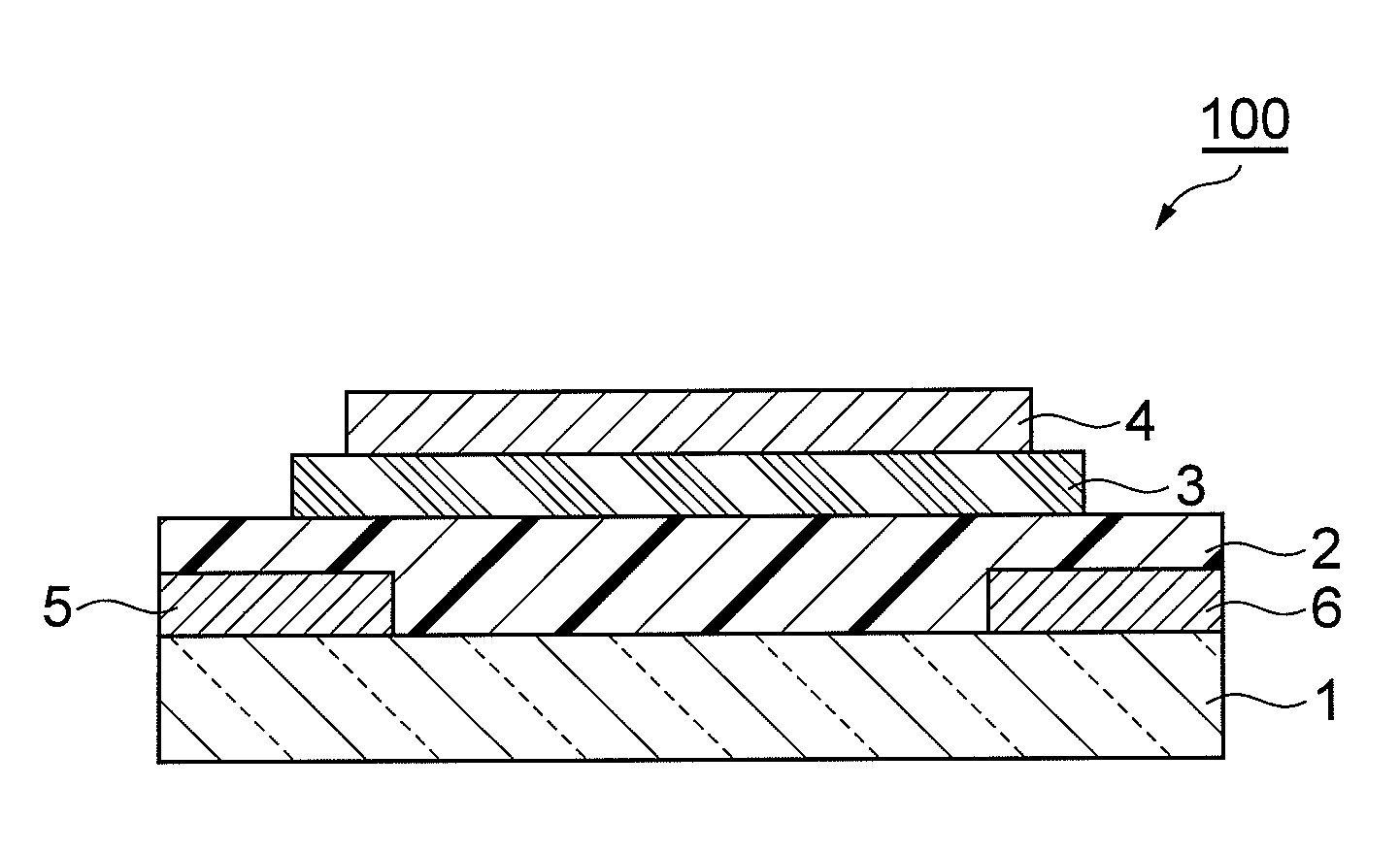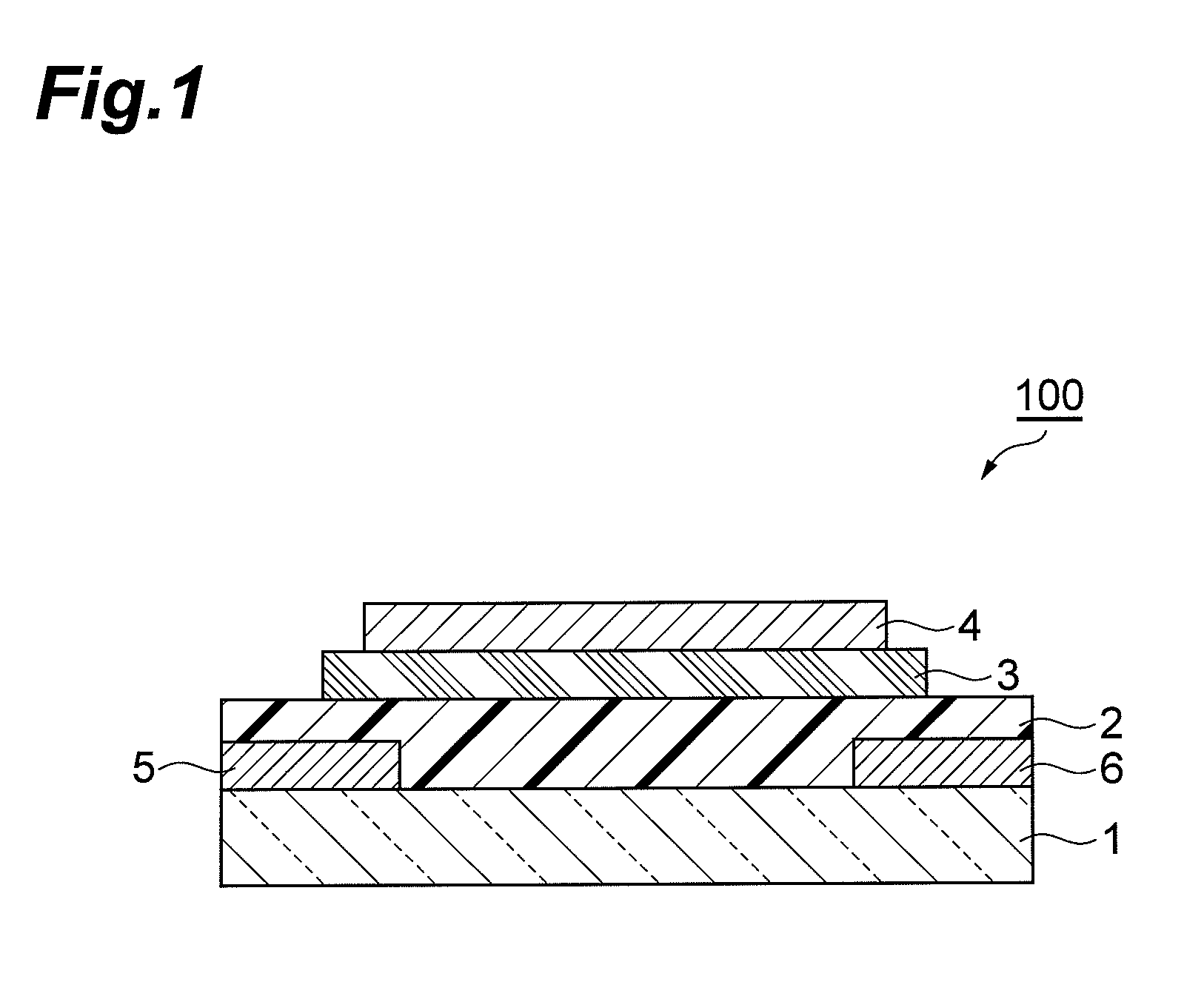Aromatic compound and method for producing same
- Summary
- Abstract
- Description
- Claims
- Application Information
AI Technical Summary
Benefits of technology
Problems solved by technology
Method used
Image
Examples
example 1
Synthesis of 5,7,12,14-tetrakis(2-(triethylsilyl)ethyl)pentacene-6,13-dione
[0160]A 10 mL Schlenk tube and a TeflonR-coated magnetic stirrer were placed in a drying oven and heated. After adequate heating, they were removed from the drying oven and the magnetic stirrer was placed in the Schlenk tube. The interior of the Schlenk tube was then exchanged with reduced-pressure nitrogen. After the Schlenk tube was cooled to room temperature, pentacene-6,13-dione (0.5 mmol, 154.1 mg) and a RuH2(CO)(PPh3)3 complex (0.10 mmol, 91.9 mg) were added. After then exchanging the interior of the Schlenk tube with reduced-pressure nitrogen, toluene (1.0 mL) and triethylvinylsilane (5.0 mmol, 920 mL) were added.
[0161]The Schlenk tube was subsequently heated in an oil bath (145° C.) and the interior mixture was reacted for 50 hours, after which the product was isolated. Isolation of the product was accomplished by purification using gel permeation chromatography (eluent=CHCl3). As a result, 5,7,12,14-...
example 2
Synthesis of 5,7,12,14-tetrakis(2-(triethylsilyl)ethyl)pentacene
[0170]A 10 mL Schlenk tube and a TeflonR-coated magnetic stirrer were placed in a drying oven and heated. After adequate heating, they were removed from the drying oven and the magnetic stirrer was placed in the Schlenk tube. Next, the Schlenk tube was connected to a reduced pressure / nitrogen line and the entire reactor was exchanged with nitrogen. The reactor was allowed to cool to room temperature, and then 5,7,12,14-tetrakis(2-(triethylsilyl)ethyl)pentacene-6,13-dione (0.95 mmol, 43.9 mg) was added. The entire reactor was then exchanged with reduced-pressure nitrogen, after which acetic acid (1.0 mL) and iodic acid (0.5 mmol) were added.
[0171]The Schlenk tube was subsequently heated in an oil bath (140° C.) and the interior mixture was reacted for 3 days. The reaction mixture was concentrated to obtain the target 5,7,12,14-tetrakis(2-(triethylsilyl)ethyl)pentacene.
[0172]The reaction produced in this example is illust...
example 3
Synthesis of 5,7,12,14-tetrakis(2-(triethylsilyl)ethyl)pentacene
[0173]A 5 mL two-necked flask, a reflux condenser, a blowing tube and a TeflonR-coated magnetic stirrer were placed in a drying oven and heated. After adequate heating, they were removed from the drying oven and the magnetic stirrer was placed in the two-necked flask. The reflux condenser and blowing tube were then mounted on the two-necked flask. The blowing tube was connected to a pressure reduction / nitrogen line and the entire reactor was exchanged with nitrogen. The reactor was allowed to cool to room temperature, and then 5,7,12,14-tetrakis(2-(triethylsilyl)ethyl)pentacene-6,13-dione (0.1 mmol, 88.0 mg) was added. After adding tert-butyl methyl ether (TBME)(2.0 mL), the mixture was cooled to 0° C. in an ice bath. There was then added LiAlH4 (0.4 mmol) to the solution. After removal from the ice bath, the reaction mixture was heated in an oil bath and reacted for 1 hour under a nitrogen atmosphere.
[0174]The reaction...
PUM
| Property | Measurement | Unit |
|---|---|---|
| Current | aaaaa | aaaaa |
Abstract
Description
Claims
Application Information
 Login to View More
Login to View More - R&D
- Intellectual Property
- Life Sciences
- Materials
- Tech Scout
- Unparalleled Data Quality
- Higher Quality Content
- 60% Fewer Hallucinations
Browse by: Latest US Patents, China's latest patents, Technical Efficacy Thesaurus, Application Domain, Technology Topic, Popular Technical Reports.
© 2025 PatSnap. All rights reserved.Legal|Privacy policy|Modern Slavery Act Transparency Statement|Sitemap|About US| Contact US: help@patsnap.com



